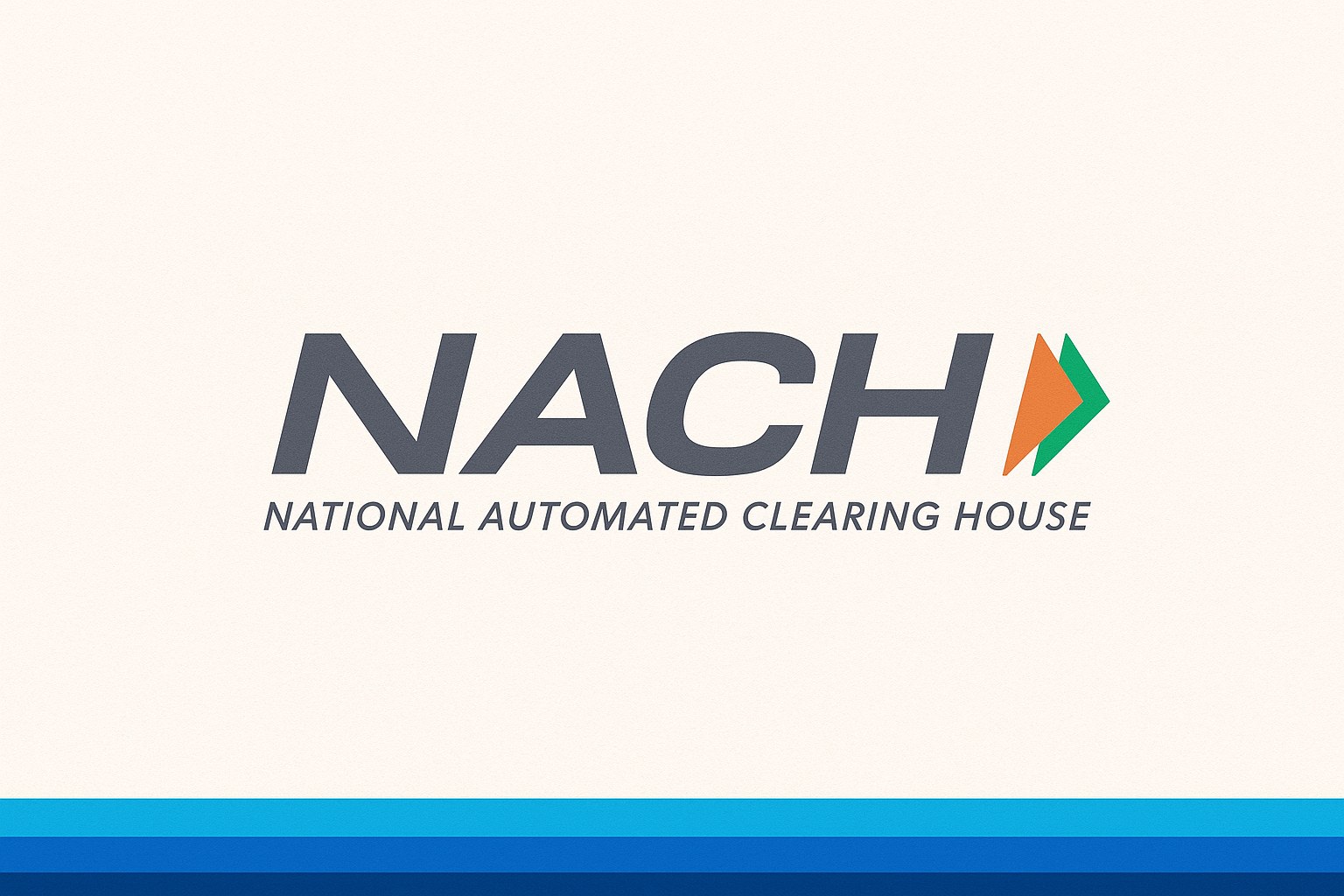Imagine paying your monthly electricity bill, SIP installments, or EMIs without having to remember the due date or standing in long queues. Or, think about receiving your salary, pension, or subsidies directly into your bank account on time, every time. This convenience has been made possible in India by NACH (National Automated Clearing House)—a centralized payment system developed by NPCI (National Payments Corporation of India).
What NACH Is (and Who It’s For)
NACH is NPCI’s centralized clearing service designed for high-volume, low-value debit and credit transactions that are frequent and repetitive. It’s offered to banks, financial institutions, corporates, and central/state governments, giving them a unified, standardized framework that removes bottlenecks in core banking services at both local and national levels. Typical current uses include bulk interbank debit/credit, bulk distributions (subsidies, dividends, interest, salaries, pensions), and bulk collections (utilities, loan EMIs, SIPs, insurance premiums). NPCI
Business Benefits of NACH
For Banks
- Lower cost versus bespoke point-to-point setups; leverages national CBS infrastructure.
- Single set of operating/business rules interoperable across IFSC/MICR/IIN.
- Strong security, straight-through-processing (STP), multi-level validations.
- Sound mechanisms for revocations, holiday management, settlement, exceptions/returns/rejects/reversals/refunds/unwinding, and disputes.
- Aadhaar–IIN mapper with governance.
- Faster processing—instant/near real-time/shorter cycles than traditional processes.
- Cost savings via automation (less manual reconciliation/paper).
- Refined Mandate Management System (MMS) and online Dispute Management System (DMS) with rich MIS.
- Scalability to process lakhs of transactions per cycle.
- MMS image/document archival beyond the predefined retention period (90 days).
For Corporations / Large Institutions
- Process large repetitive transactions instantly without paper across geographies.
- Lower legal/process risk through clear rules and integrity.
- Better customer/vendor debit/credit cycles → goodwill and smoother ops.
- No deadline-chasing across disparate data points—automation handles it.
- Lower workload for staff; they can be redeployed to higher-value tasks.
- Corporate portability: a member bank can handle a corporate’s transactions irrespective of the sponsor bank used for mandate registration.
- E-mandate acceptance & end-to-end automation reduces destination bank effort (incl. auto submission of authenticated mandates). NPCI
For Customers
- No need to track due dates for repetitive debits; can receive government subsidies.
- Assurance of fulfillment via automated authentication.
- Less paperwork and no repetitive manual actions for things like SIPs/premiums.
For Government
- Supports Aadhaar-based transactions → deeper financial inclusion.
- Cost-effective, efficient DBT network with authentic beneficiaries.
- Saves on distribution infrastructure, increases transparency and security.
- Ensures on-time poverty-alleviation/financial support without geographic delays.
- Enables simultaneous pan-India transactions for employees and citizens
Who Participates in NACH (Ecosystem & Roles)
Sponsor Banks: Banks that are RBI-approved members of a payment system/channel and sign an SLA with NPCI may originate NACH transactions as Sponsor Banks.
Destination Banks: RBI-approved member banks may join NACH as Destination Banks (post agreement) to process transactions, handle debit mandates, and update the Aadhaar Mapper.
Corporates / Government Departments: They participate as Users through their Sponsor Bank (naming the sponsor for settlement). Departments/Corporates can also become Direct Participants with Direct Corporate Access (DCA) (subject to Sponsor Bank recommendation and NPCI guidelines).
Other Participants:Approved Payment System Solution Providers can join after registering with NPCI. The Indian Postal Department is also eligible as a NACH member.
NPCI’s Role: NPCI manages, operates, and maintains NACH (directly or via a service provider), frames Steering Committee structure, onboarding/de-boarding, notifications, settlement cycles, process flows, risk mitigation, and dispute resolution, and provides the unified, standardized framework of best practices.
Why Was NACH Needed?
Before NACH, India relied on ECS systems to handle bulk electronic transactions. While ECS was effective in the early stages, it had multiple limitations:
- Geographic Restrictions: Local ECS centers were bound by specific regions, meaning that transactions initiated in one region could not always be processed seamlessly in another.
- Multiple Variants: With Local ECS, Regional ECS, and NECS (National ECS), there was no single standardized process. This created confusion and inefficiency for banks, corporates, and customers.
- Delayed Settlements: ECS transactions often faced delays due to manual mandate verification and fragmented operations.
- Limited Scalability: With India’s growing economy and rising transaction volumes, ECS lacked the scalability required to handle high volumes efficiently.
To resolve these issues, NPCI introduced NACH, which:
- Consolidates all ECS variants into a single, nationwide platform.
- Enables same-day or next-day settlement, ensuring predictability.
- Introduces an electronic Mandate Management System (MMS) for secure and fast mandate verification.
- Allows integration with Aadhaar through the Aadhaar Payment Bridge (APB) to facilitate Direct Benefit Transfers (DBT).
Thus, NACH emerged as the modern backbone of India’s bulk payment and collection infrastructure.
NACH Practical Use Cases
- Pan-India Salary Credits: A large corporate with ~35,000 employees sets a fixed monthly salary cycle (e.g., 29th). Through a mandate with its bank, salaries are disbursed nationwide via NACH.
- DBT to Farmers: A state creates a subsidy to support a crop season; after verification, authorized DBT credits reach eligible farmers’ accounts through NACH.
- Mutual Fund SIP Collections: An AMC runs online SIPs; via a bank mandate and Aadhaar verification, SIPs of different amounts are collected nationwide using NACH.
- Insurance Premium Auto-Debit: Health insurance premiums are automatically debited by due dates via NACH—no manual tracking needed.



